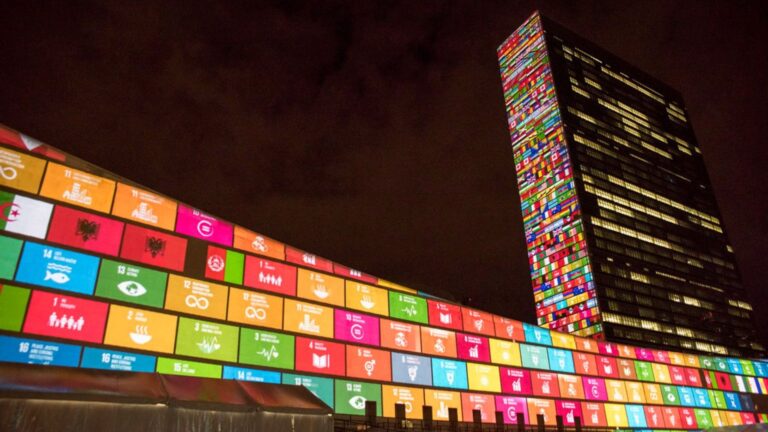The world is not on track to achieve the Sustainable Development Goals (SDGs) and accomplish the 2030 agenda for sustainable development. The 17 goals claiming to be transformational are contradictory and insufficient. Poverty has not decreased, inequality is deepening and emissions keep rising. If the SDGs wish to be more than business as usual, structural change is needed.
The SDGs recently celebrated their five-year birthday, yet this five-year mark hardly calls for a celebration. Progress towards achieving the SDGs was off track even before current setbacks caused by the spread of coronavirus. Despite being an improvement from their forerunner, the Millennium Development Goals, the extent to which the SDGs can truly ‘transform our world’ is up for debate.
Many of the goals are blatantly contradictory. The goals call for more economic growth, yet simultaneously for protecting the planet and combating climate change. Since production and consumption levels are already overburdening the planet, disregard for the environmental impacts of economic growth is problematic to say the least.
In fact, economic growth is at the heart of the SDGs, seen as a solution to poverty and inequality. A recent report by Philip Alston, the United Nations’ Special Rapporteur on Extreme Poverty and Human Rights, criticises the SDGs. According to the report, the various targets and indicators under goals are inadequate for achieving real change.
The SDGs call for the eradication of extreme poverty, defined by the international poverty line at $1.90 a day. Such an inhumanely low line is inadequate for accurately measuring global poverty levels. In fact, it has even led to the United Nations being able to portray a false narrative of decreasing poverty rates. A more ambitious poverty line of $5.50 a day displays how poverty levels have more or less stayed the same during the past three decades. This has happened with unprecedented levels of global economic growth.
Inequality has risen immensely within countries but also between countries. By using data from the World Bank, the economic anthropologist Jason Hickel, has demonstrated how the income gap between the global North and South has quadrupled from 1960 to 2017. A key reason for this widening gap is the international trade laws enforced by the World Trade Organisation, which the SDGs promote, contradicting themselves once again.
At the current rate the SDGs are nothing more than business as usual. Alston’s report argues that what should be focused on are unjust structures within the global political economy such as fiscal policies that enable illicit financial outflows, tax avoidance and crippling debt. What is needed is redistribution of wealth, tax justice, universal social protection and stopping emissions. Only if the targets are reformed to tackle root causes rather than mere symptoms, will the SDGs have the potential to be truly transformative.

